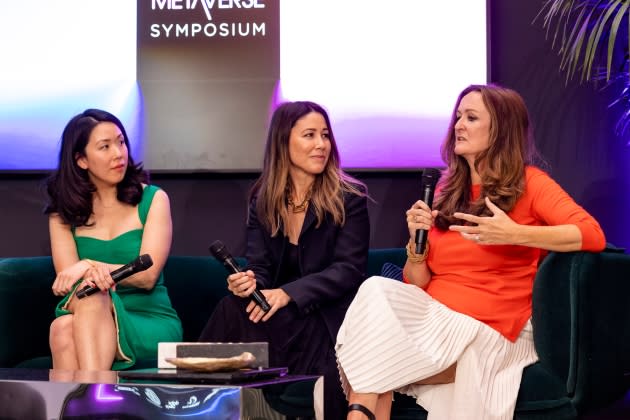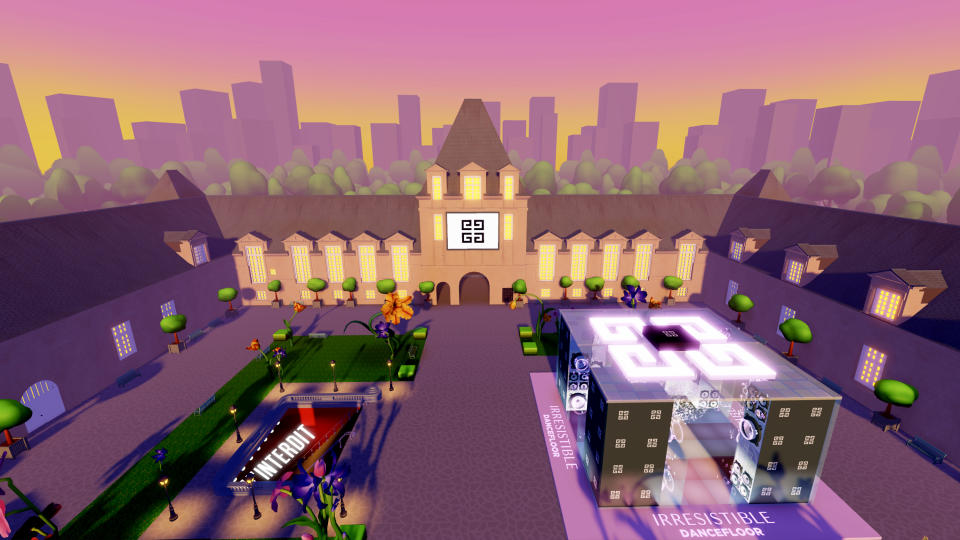Metaverse Symposium: Harnessing the Community Is Way Forward for Brands in the Metaverse, Gaming

First was gaming, then the metaverses: Fashion’s rush to tap into the growing audiences populating alternative worlds may still be in the watch and learn phase for many, but “the question of ‘if’ is no longer there, it’s more about when and how they are actually going to come onto the platforms,” said Christina Wootton, vice president, global partnerships at Roblox, during WWD’s Metaverse Symposium in Paris.
The experiential and socializing dynamics, as well as storytelling opportunities, unfurling on Roblox and other metaverses and games represent the key engagement factors and levers to gain demographics actively building their Web3 life.
More from WWD
“Sort of over 10 years ago fashion and gaming felt like the most unlikely bad fellows…[but games] are platforms of creativity, to story tell, to self-express; it’s a way to connect them with your products and your stories,” said Lucy Yeomans, co-chair, chief brand and product officer, and founder of popular fashion-minded game Drest.
Building an enticing environment and experience may not be an easy feat for fashion and beauty brands and understanding the shared creativity concept sitting at the core of the alternate worlds is the way forward.
“If you want to be relevant with the Gen Z audience you have to share your brand with them, let them create and get feedback from them because otherwise they will move on. They want to feel like you’re loyal to them as well,” Wootton said, noting how brands should loosen their grip on strict IP compliance in the metaverses.
Users want to have a say and put their point of view on the brand and products across, hence listening — to developers, creators and tech enthusiasts — is fundamental.
“What I love about gaming is, you can still control the environment, but you can really let people have a lot of fun in there so it’s the brands that go the extra mile” that succeed, Yeomans said.
“Every single brand you’ve seen on our platform, they’ve connected with a developer or UGC creator and shared their vision, their brand’s objectives and listened to them about how they think that can resonate, and be into the platform in an authentic way,” echoed Wootton, who masterminded Roblox tie-ups with Gucci, Tommy Hilfiger, Ralph Lauren, Givenchy Beauty and Alo Yoga, among others.

Courtesy of Givenchy Parfums
Providing Web3 creators with codes of the house for their experimentation should not be seen as diluting brand identity, according to Yeomans. On the contrary, it allows to connect and align with one’s audience more insightfully.
“By harnessing the community, you can really learn so much about an individual, and there are statistics out there suggesting that consumers want their digital twins to be more exciting and more creative than their real life personas,” said Lisa Hau, chief operating officer at Bidstack, the U.K. tech company empowering video game publishers to dynamically control and monetize their virtual environments.
Executives highlighted that it’s not necessarily likeness to IRL appearance but rather likability the parameter to bear in mind.
“If you actually watch at Gen Z…it is an extension of themselves, and if it is a dinosaur, they still feel that that’s them and they want their clothing to evolve with whatever avatar body they have,” Wootton said.
This might influence more daring fashion choices in the real world, Yeomans said. “We’re very into this sort of real-virtual-real [dynamic], where it starts in the real, credible fashion, spins it up in the virtual space where you can be more daring, you can experiment, but it may have that impact on your real-life purchasing decisions,” she offered.
“You can create products in the digital space that are not even available in the physical world…you have a creative director…that has this imagination, they can go as far as they can because there are no limits,” Wootton said.
Could metaverses and games become launchpads for new products or test spaces before goods are even produced?
Yeomans thinks so, and touted the amount of data platforms can provide as potentially guiding company decisions.
“I’m really passionate about the idea of prototyping products in the game before they go to market and helping brands assess what the distribution plan should look like for each of their collections,” she said.
Web3 platforms reach one third of the world’s population, with Roblox for instance, boasting 54 million daily users mostly aged 13 and above. This explains why they have become quite a crucial part of the marketing mix, according to Hau, as they support amplification of brand equity, allowing for discovery and accessibility.
“Advertising dollars tend to follow where eyeballs are and I think it’s undeniable…that it presents an open opportunity for brands to spend time with consumers,” Hau noted.
Sign up for WWD's Newsletter. For the latest news, follow us on Twitter, Facebook, and Instagram.

